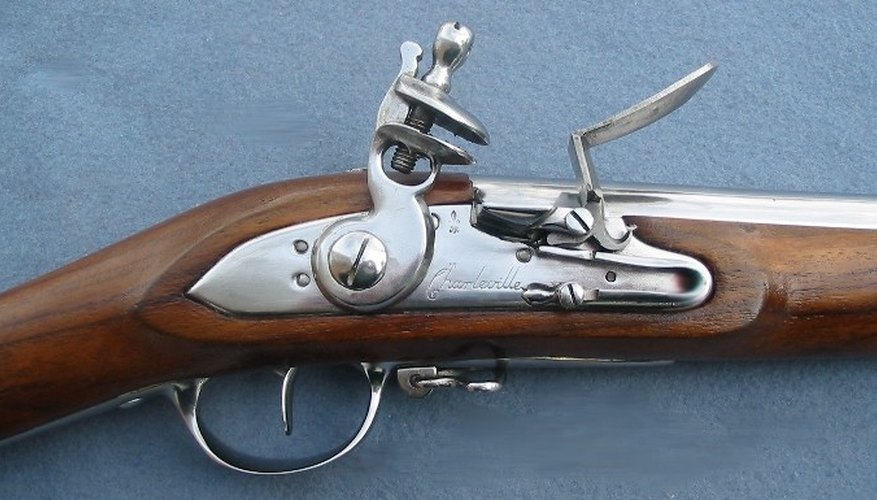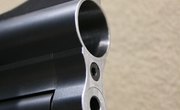
Muzzleloaders are guns that are shot by loading the ammunition into the muzzle, or barrel. You might use a muzzleloader to hunt during special muzzleloading seasons, or you might simply want to get a sense of what it was like during the pioneer days of Davy Crockett and Daniel.
Muzzleloading guns are often as different as the people who shoot them, but there are three basic categories: flintlock, caplock and inline.
Flintlock
Flintlock muzzleloaders look and operate much like those used by Boone and Crockett in the 1800s. They are also often referred to as "black powder" guns because they use flintlocks and black gunpowder to propel patched balls. Flintlock muzzleloaders require more time and effort to shoot than more modern muzzleloaders because of of the steps involved in a successful discharge.
With flintlock muzzleloaders, a flint strikes a piece of metal, called a frizzen. The flint scrapes small pieces of hot metal away from the frizzen, which are then deposited into a pan of priming powder that ignite the gunpowder in the barrel of the gun. The process can be difficult because of all the variables involved. The flint has to be the proper size to produce the pieces of metal from the frizzen, the frizzen needs to be hard enough to ignite the priming powder in the pan, and the proper amount of priming powder needs to be used to discharge the gunpowder in the barrel.
There is a misconception that flintlock muzzleloaders can't be effectively used for hunting. But the truth is, flintlock muzzleloaders can be as accurate as modern guns with proper practice. Many traditional muzzleloading enthusiasts are successful at hunting deer and other big-game animals with flintlock guns.
Caplock
With a caplock muzzleloader, a cap is held by a nipple on the side of the gun barrel. After a hammer strikes the cap, the resulting flame travels from the nipple to the barrel of the gun. One common problem with caplock muzzleloaders is that the cap can easily get wet, making it more difficult to shoot the gun.
Inline
With inline muzzleloaders, the cap is located directly behind the charge. Inline guns allow more of the original flame to access the barrel and ignite the flame. Most inline muzzleloaders also provide more protection for the caps, thus providing more reliability.
Many inline muzzleloaders also feature added features like scopes that are beneficial for hunting, but go against the traditional notion of flintlock guns. Inline muzzleloaders also often use powder that is pelletized and bullets that look more like present-day ammunition.
Size Matters
Whether you shoot a flintlock, caplock or inline muzzleloader, there are a variety of ammunition sizes available. The majority of muzzleloaders use about .50-caliber ammunition because it is good for hunting deer and other large game, as well as for leisure and target shooting.
The caliber configuration of a muzzleloader is strictly a matter of preference. Some enthusiasts prefer smaller-caliber guns in the .36- to .40-caliber range, while others prefer guns in the .50- to .54-caliber range. For hunting purposes, the larger the caliber of the ammunition, the larger the game you can effectively shoot.
Hunting Weapons
Seeing the smoke that they produce and how much bigger and bulkier muzzleloading rifles are than traditional guns might make you think they are more for show than functionality. But with scopes and sights, they can be just as good as high-powered rifles.
The effective distance for muzzleloaders is normally around 150 yards or less, but most hunting is done at much shorter distances. Reloading is obviously more of a challenge, but in hunting you usually only have one shot anyway.
References
Writer Bio
Jeff Dickinson has been writing professionally for 19 years. He began covering sports for The Huntsville Times in Alabama and moved to Atlanta in 1997. Dickinson worked in corporate communications for seven years before beginning his freelance career in 2005. He covers football for the Marietta Daily Journal and FANatic Sports and writes for a variety of websites.



